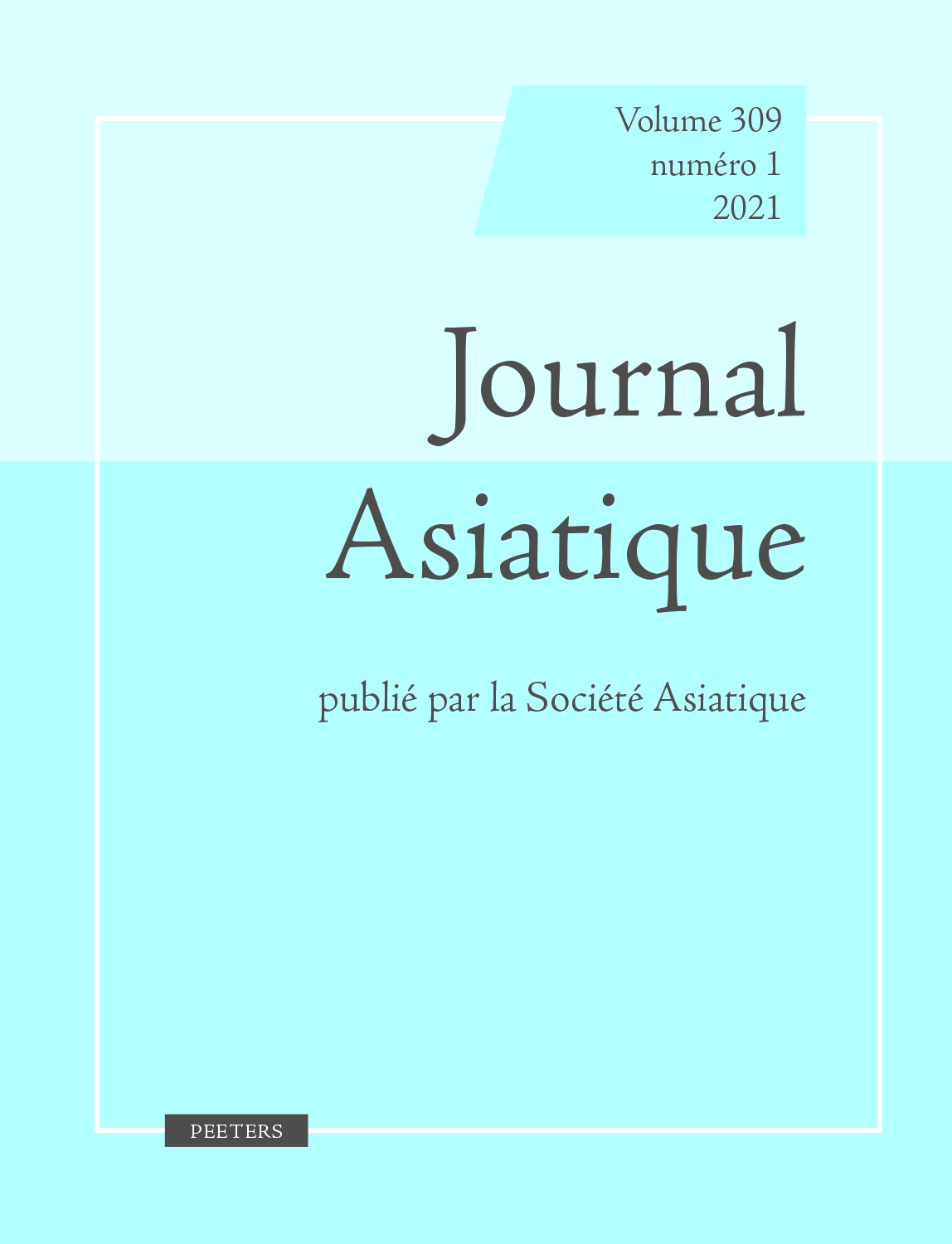 previous article in this issue previous article in this issue | next article in this issue  |

Preview first page |
Document Details : Title: Iranian Zaydism during the 7th/13th Century Subtitle: Abū l-Faḍl b. Shahrdawīr al-Daylzmī al-Jīlānī and his Commentary on the Qur'ān Author(s): ANSARI, Hassan , SCHMIDTKE, Sabine Journal: Journal Asiatique Volume: 299 Issue: 1 Date: 2011 Pages: 205-211 DOI: 10.2143/JA.299.1.2131064 Abstract : Although the leading intellectual centres of Zaydism were located in Northern Iran from the 3rd/9th through the late 6th/12th centuries, most of the Zaydī literary legacy was no longer transmitted following its decline. Had it not been for the massive transfer of Zaydī religious literature from Iran to Yemen following the political unification of the Caspian and Yemeni Zaydīs that began by the end of the 5th/11th century, most of the Iranian Zaydī literary heritage would have been lost. That the tradition of Zaydī learning continued in Iran at least until the 10th/16th century is confirmed by scattered documents attesting the scholarly tradition of Zaydism of the 9th/15th and 10th/16th centuries, as well as by a number of manuscripts transcribed in the Caspian Zaydī community between the 7th/13th and the 10th/16th centuries. Among these manuscripts are several partial copies of the comprehensive commentary on the Qur'ān by Abū l-Faḍl b. Shahrdawīr b. Yūsuf b. Abī l-Ḥasan al-Daylamī al-Jīlānī al-Mirkālī, one of the most impressive testimonies to Zaydī learning in 7th/13th century Iran. Two of these volumes that together cover the tafsīr in its entirety are now available in facsimile publication. This brief communication sketches the main characteristics of the commentary and presents all that is hitherto known about its author. Bien que les principaux centres intellectuels du zaydisme aient été situés dans le nord de l’Iran depuis le 3e/9e et jusqu’au 6e/12e siècle, l’héritage littéraire zaydī, pour l’essentiel, n’y fut plus transmis par suite du déclin de cette tradition. La plus grande partie du patrimoine littéraire zaydites proprement iranien aurait ainsi été perdue, n’eût été le transfert massif de la littérature religieuse de l’Iran zaydite au Yémen, après l’unification politique des zaydites de la région Caspienne et du Yémen qui commença à la fin du 5e/11e siècle. La persistance de la tradition de l’enseignement zaydī en Iran jusqu’au 10e/16e siècle au moins est confirmée par des documents épars qui attestent les traditions intellectuelles des savants zaydites des 9e/15e et 10e/16e siècles, mais aussi par des manuscrits que la communauté zaydī caspienne transcrivit entre les 7e/13e et 10e/16e siècles. Parmi ces manuscrits se trouvent plusieurs copies partielles d’un commentaire intégral du Coran, dû à un certain Abū l-Faḍl b. Shahrdawīr b. Yūsuf b. Abī l-Ḥasan al-Daylamī al-Jīlānī al-Mirkālī, l’un des témoignages les plus impressionnants des enseignements zaydī de l’Iran du 7e/13e siècle. Deux de ces volumes ensemble couvrent ce tafsīr dans son intégralité; ils sont maintenant disponibles en fac-similé. Cette note aborde les principales caractéristiques du commentaire et recueille tout ce que l’on connaît aujourd’hui de son auteur. |
|


